Issue Archive
Table of Contents
BLOOD COMMENTARIES
PERSPECTIVE
When non-Whiteness becomes a condition
Merz and Achebe argue persuasively for abandoning the term “benign ethnic neutropenia” to describe the normal neutrophil counts in selected populations with origins in Africa and the Arabian Peninsula. To describe the normal neutrophil count in certain populations as “neutropenia” applies a pathologic label to a normal phenomenon and reflects patterns of systemic racism within our health care system.
BLOOD SPOTLIGHT
Risk factors in multiple myeloma: is it time for a revision?
Two papers in this issue document the changing landscape of multiple myeloma in the wake of improved therapies. In the first, investigators from the PETHEMA group report on minimal residual disease (MRD) in multiple myeloma. Although MRD negativity is achieved in a higher percentage of standard-risk than high-risk patients, MRD negativity in both groups is associated with equivalent relapse-free and overall survival. Residual MRD-positive myeloma cells show divergent mutational patterns in high- and low-risk patients, potentially explaining the worse prognosis in the latter group. In a timely Blood Spotlight review, Corre et al discuss how observations like these demand a revision of the evaluation of disease risk in myeloma.
CLINICAL TRIALS AND OBSERVATIONS
Reduced-intensity therapy for pediatric lymphoblastic leukemia: impact of residual disease early in remission induction
Clinical Trials & Observations
The excellent long-term outcomes of children with low-risk acute lymphoblastic leukemia have led investigators to try to decrease therapy in order to reduce long-term toxicity. The authors present data on 200 children with postinduction MRD of <0.01% who were treated with reduced-intensity therapy, documenting excellent outcomes, especially in those patients with MRD of <0.001%.
IMMUNOBIOLOGY AND IMMUNOTHERAPY
Kindlin-3 recruitment to the plasma membrane precedes high-affinity β2-integrin and neutrophil arrest from rolling
Integrin engagement is critical to the process of leukocyte trafficking to sites of infection. The authors demonstrate that kindlin-3 recruitment precedes and is necessary for high-affinity β2-integrin binding enabling neutrophil arrest.
LYMPHOID NEOPLASIA
Clinical characteristics and outcomes of extranodal stage I diffuse large B-cell lymphoma in the rituximab era
Bobillo et al performed a retrospective analysis of early-stage diffuse large B-cell lymphoma (DLBCL) in the rituximab era. Although overall outcomes are excellent, extranodal DLBCL has inferior survival, and patients benefit from radiotherapy in the setting of positive positron emission tomography findings after chemoimmunotherapy.
Deep MRD profiling defines outcome and unveils different modes of treatment resistance in standard- and high-risk myeloma
Clinical Trials & Observations
Two papers in this issue document the changing landscape of multiple myeloma in the wake of improved therapies. In the first, investigators from the PETHEMA group report on minimal residual disease (MRD) in multiple myeloma. Although MRD negativity is achieved in a higher percentage of standard-risk than high-risk patients, MRD negativity in both groups is associated with equivalent relapse-free and overall survival. Residual MRD-positive myeloma cells show divergent mutational patterns in high- and low-risk patients, potentially explaining the worse prognosis in the latter group. In a timely Blood Spotlight review, Corre et al discuss how observations like these demand a revision of the evaluation of disease risk in myeloma.
Expression of NrasQ61R and MYC transgene in germinal center B cells induces a highly malignant multiple myeloma in mice
MYELOID NEOPLASIA
Trib1 promotes acute myeloid leukemia progression by modulating the transcriptional programs of Hoxa9
Through a series of studies in mice, Yoshino and colleagues elucidate the interaction of Trib1 and Hoxa9 in leukemogenesis. They demonstrate that Trib1 induces leukemia through degradation of the transcription factor C/EBPα and modification of Hoxa9-associated superenhancers, suggesting Trib1 inhibition as a potential targeted therapy for acute myeloid leukemia.
RED CELLS, IRON, AND ERYTHROPOIESIS
p53 activation during ribosome biogenesis regulates normal erythroid differentiation
THROMBOSIS AND HEMOSTASIS
Ciraparantag, an anticoagulant reversal drug: mechanism of action, pharmacokinetics, and reversal of anticoagulants
Ansell et al report the characteristics of a novel anticoagulant reversal agent, ciraparantag, which binds noncovalently to heparin, low-molecular-weight heparin, and direct oral anticoagulants. This “universal” anticoagulant reversal agent has a rapid onset of action and a short half-life, but in animals and normal volunteers it durably reverses anticoagulation, with normal whole-blood clotting times documented for 24 hours.
TRANSPLANTATION
Glycolytic metabolism of pathogenic T cells enables early detection of GVHD by 13C-MRI
Graft-versus-host disease (GVHD) continues to be a leading cause of morbidity and mortality complicating allogeneic hematopoietic stem cell transplantation, and definitive diagnosis often requires invasive tissue sampling. Assmann et al demonstrate the value of in vivo imaging of glycolysis for detection of activated T-cell trafficking to target organs, offering potential for noninvasive diagnosis of GVHD.
LETTER TO BLOOD
Thrombopoietin receptor agonists as an emergency treatment for severe newly diagnosed immune thrombocytopenia in children
Clinical Trials & Observations
BLOOD WORK
-
Cover Image
Cover Image
![issue cover]()
Scanning electron micrograph of a whole-blood clot showing fibrin formation restored after ciraparantag reversal of edoxaban-induced anticoagulation in a rat. See the article by Ansell et al on page 115.
- PDF Icon Front MatterFront Matter
- PDF Icon Table of ContentsTable of Contents
- PDF Icon Back MatterBack Matter
- PDF Icon Editorial BoardEditorial Board
Advertisement intended for health care professionals
Email alerts
Advertisement intended for health care professionals


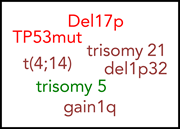
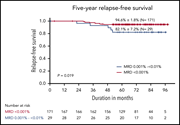

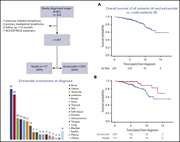
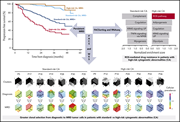

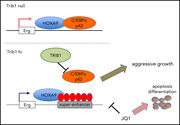
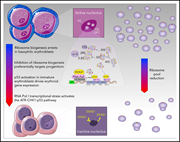
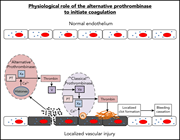

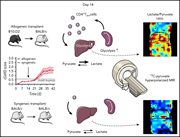

Kindlin-3: at the right place at the right time